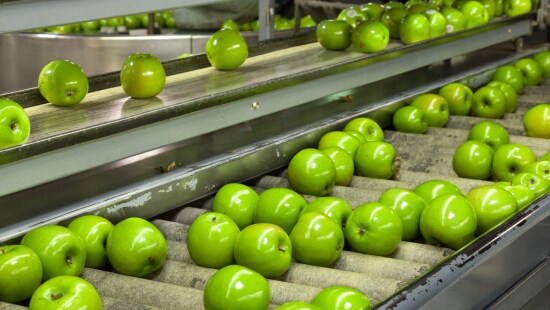Pest Control in Food Processing industry
Best practices and digital innovation: the keys for an efficient Pest Control

Regulations and standards, competitiveness, environmental impact, societal commitment, new consumer needs: the food processing industry meets many major challenges. At the heart of these mutations, the drastic hygiene standards punctuate the entire activity chain of the food industry, where the fight against pests is a crucial issue.
What are the latest quality and hygiene standards?
What are best practices to implement and how does digital innovation support predictive pest control?
Recently, the updated IFS Food V7 standard states that food industries, wishing to be certified, must implement a risk-based pest management system to avoid any negative impact on products. This accountability of food companies requires the appointment of trained internal referents. It also implies the establishment of a solid collaboration with qualified and certified (biocide and phytosanitary) pest control operators.
As you know, the highly regulated environment of the agri-food industry also requires increased monitoring. It is therefore essential to use the services of a pest control partner invested in its regulatory expertise in order to anticipate these major changes and to be able to provide the appropriate training.
In compliance with the EU-528/2012 regulation, it is also imperative to respect the regulations on biocidal products and in particular, the restrictions on the use of rodenticides (Non-Permanent Baiting). They require that these substances are strictly reserved for curative actions, in case of proven infestation after validation of the lack of results of alternative means - and this, regardless of the means implemented. Curative treatments with anticoagulants must be supervised by two audits - initial and final - and baiting stations must be inspected regularly, every two to three days for mice and every five to seven days for rats.
We have thus moved from a baiting approach to a permanent monitoring dimension that can be completed by a curative action in case of infestation.
A key prerequisite in a control plan: risk analysis
The implementation of a control plan is a prerequisite for reference and certain regulatory aspects. In rodent control, the effectiveness of a control plan must be based on a risk analysis to identify all the hazards and exposure related to the activity. This detailed and precise risk analysis can only be performed by a seasoned specialist.
Indeed, with more than 30 years of experience in pest control, I am certain that the quality of a protection plan is not measured by the number of devices put in place but by the choice and strategic positioning of these devices.
It should also be noted that the means and methods must be defined according to the particularity of the site (activity, location, raw materials used, production method).
Finally, the implementation of a proactive rather than reactive approach remains a key element to reduce the harmful risk as much as possible. A solid partnership, based on exchange, expertise and the sharing of good practices are, in my opinion, the keys to the serenity of all agri-food sites.
Technological innovation: a new era in pest control
Today, pest control is going digital. Indeed, connected monitoring solutions offer a predictive approach based on data collection and analysis.
While digital technology alone cannot solve the problems of an unhealthy environment, it can provide very useful data on existing and potential problems in and around the site.
Through connected devices, it is possible to highlight areas of risk while monitoring the entire site, including hard-to-reach areas.
Necessarily integrated into an expert service programme, digital monitoring solutions allow for the monitoring, management and documentation of pest activity.
Did you also know that they are fully compliant with IFS requirements: "Inspections and resulting actions must be documented. The implementation of actions must be monitored and recorded. Any infestation must be documented and control measures put in place."
In a nutshell: new digital technologies can help us anticipate and prevent food safety issues, as well as better detect and respond to harmful risk when it occurs. Combined with a personalized interface, they provide the monitoring and accuracy of key information of a control plan for full regulatory compliance.
Regulatory and sanitary issues in the food industry, as well as the opportunities offered by digital technologies, have changed practices and require advanced know-how and expertise in pest control. Risk analysis and the implementation of a truly proactive approach are the keys to pest control. Expertise, know-how, reactivity, and trust must be essential criteria in the choice of a partner to ensure long-term food safety.
Finally, beyond the world of the food industry, the need for traceability is growing. A 2020 survey by Innova Market Insights reveals that 6 out of 10 consumers worldwide have a need for transparency and want to know more about how their food is sourced, processed and manufactured.
So, proactively managing harmful risk is in line with consumers' need for food and health safety while preserving your brand and reputation.

Would you like to discuss best practices or the benefits of a digital monitoring solution on your site?



